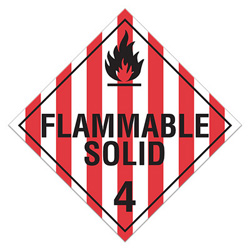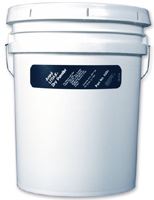| The Home page of ILPI's Safety Data Sheet (SDS) Resource, the leader in SDS information since 1995! | |
| The history and philosophy behind this resource. | |
| A curated collection of books and reference materials concerning Safety Data Sheets and closely related topics. | |
| Paste your plain text SDS into the SDS-Demystifier, and it will be converted into a hypertext-enriched document with links to detailed explanations of each key term. | |
| An extensive list of frequently asked questions about Safety Data Sheets including regulations, content, compliance, and more. | |
| A humorous take on Safety Data Sheet jargon. Fill in the blanks on our entry form to generate a personalized Unsafety Data Sheet to share with your coworkers. | |
| Since 1995, we've maintained this massive curated list of the best places to find Safety Data Sheets on the Internet. | |
| You are here! Way more than a glossary, this hypertext-enhanced resource covers hundreds of SDS-related terms and expert knowledge. Each entry includes both the SDS relevance and links to additional authoritative resources. | |
| Archived results of Safety Data Sheet related polls taken by some of our millions of site visitors | |
| The OSHA regulations behind SDS regulations, including the inspection guidelines and over 400 official interpretations letters under the Hazard Communication Standard | |
| Commercial suppliers of SDS authoring and management software as well as cloud compliance services. | |
| Commercial companies that will create SDS's for your specific needs as well as SDS translation companies. |

Safety signs, banners, and scoreboards? Get yours at Safety Emporium!
Definition
An alkali metal is any element other than hydrogen found in the first column of the periodic table. These elements include lithium (Li), sodium (Na), potassium (K), rubidium (Rb), cesium (Cs) and francium (Fr):

Additional Info

Be sure you're in compliance with DOT placards and labels from Safety Emporium.
Francium is a radioactive element that is highly unstable. It occurs in such minute amounts that it will not be discussed further.
In their elemental forms, the alkali metals are all soft, ductile, malleable substances that can be easily cut with a knife or drawn into a wire. Although these are shiny when cut, they almost immediately tarnish in air.
Alkali metals are quite reactive towards air and water, with increasingly dangerous reactivity as one moves down the column from Li to Cs. The reaction with water can be summarized by the chemical equation below where M = an alkali metal.
2 M(s) + 2 H2O  2 M+(aq) + 2 HO-(aq) + H2(g)
2 M+(aq) + 2 HO-(aq) + H2(g)
The heat generated by this reaction is sufficient in most cases to ignite the hydrogen gas (H2) that is evolved in the reaction. This can result in a powerful explosion depending on the amount and surface area of the alkali metal. Elemental potassium and cesium are particularly dangerous in this regard; even one gram can cause a serious hazard. When working with alkali metals, be sure you have a fire extinguisher that is approved for Class D fires.
Because of their water-reactive and/or pyrophoric nature, alkali metals are usually stored under an inert atmosphere and/or mineral oil. This also reduces the rate of formation of dangerous peroxides. Note: lithium should not be stored under nitrogen because the two can react to form lithium nitride, Li3N.
Finally, note there is a great difference between an alkali metal and an alkali metal cation. For example, (elemental) sodium metal, Na, is quite dangerous to work with, whereas sodium chloride (which contains the sodium cation, Na+, and chloride cation, Cl-) is common table salt. Then again, excessive dietary salt intake is associated with hypertension (high blood pressure).
SDS Relevance
Always use extreme caution when working with alkali metals. All equipment, solvents and chemicals need to be dry. Avoid contact with or storage near incompatible materials; for example, addition of sodium metal to carbon tetrachloride, other halogenated materials, or certain alcohols would lead to a catastrophic explosion.
Do not work with alkali metals unless you have had special training from someone who is experienced in working with these materials. Most accidents involving alkali metals tend to occur when one is cleaning up and "quenching" the alkali metal. Such procedures usually involve the use of flammable organic solvents, making such accidents quite severe. A proper Class D extinguisher should be available where alkali metals are utilized.
The Safety Data Sheet for alkali metals contains a host of information including fire-fighting measures, accidental release measures, precautions for safe handling/storage and more. Be sure to read an understand these SDSs fully!
The lithium ion (Li+) is a psychoactive agent so avoid inhalation or ingestion of lithium-containing materials by using proper personal protective equipment such as dust masks and gloves as well as engineering controls such as fume hoods. This information, if applicable, will be found in Section 11 (toxicological information) and Section 8 (exposure controls/personal protection) of the SDS. See below for links concerning the use of lithium in treating manic depression (bipolar disorder).
Further Reading
- Class D fire extinguishers and bulk agents at Safety Emporium.
- More info and pictures for potassium at WebElements. Be sure to check out the QuickTime movie showing the reaction between K and water!
- See the relative reactivities of the alkali metals with water on YouTube. The Brainiac video on alkali metals shows some highly impressive destruction (which may have been enhanced). The non-Braniac version is also impressive.
- View the disposal of surplus sodium in 1947 at YouTube.
- Information on manic depression and lithium at WebMD.com
- Lawrence Livermore National Laboratory has an excellent resource titled "Safe Handling Of Alkali Metals And Their Reactive Compounds", but they have made it (and many others) non-public. We submitted a Freedom of Information Act request years ago and never received a response. We found a version from 2005 using the Internet Archive Wayback Machine.
See also: alkaline earth, halogen, inert, water reactive.
